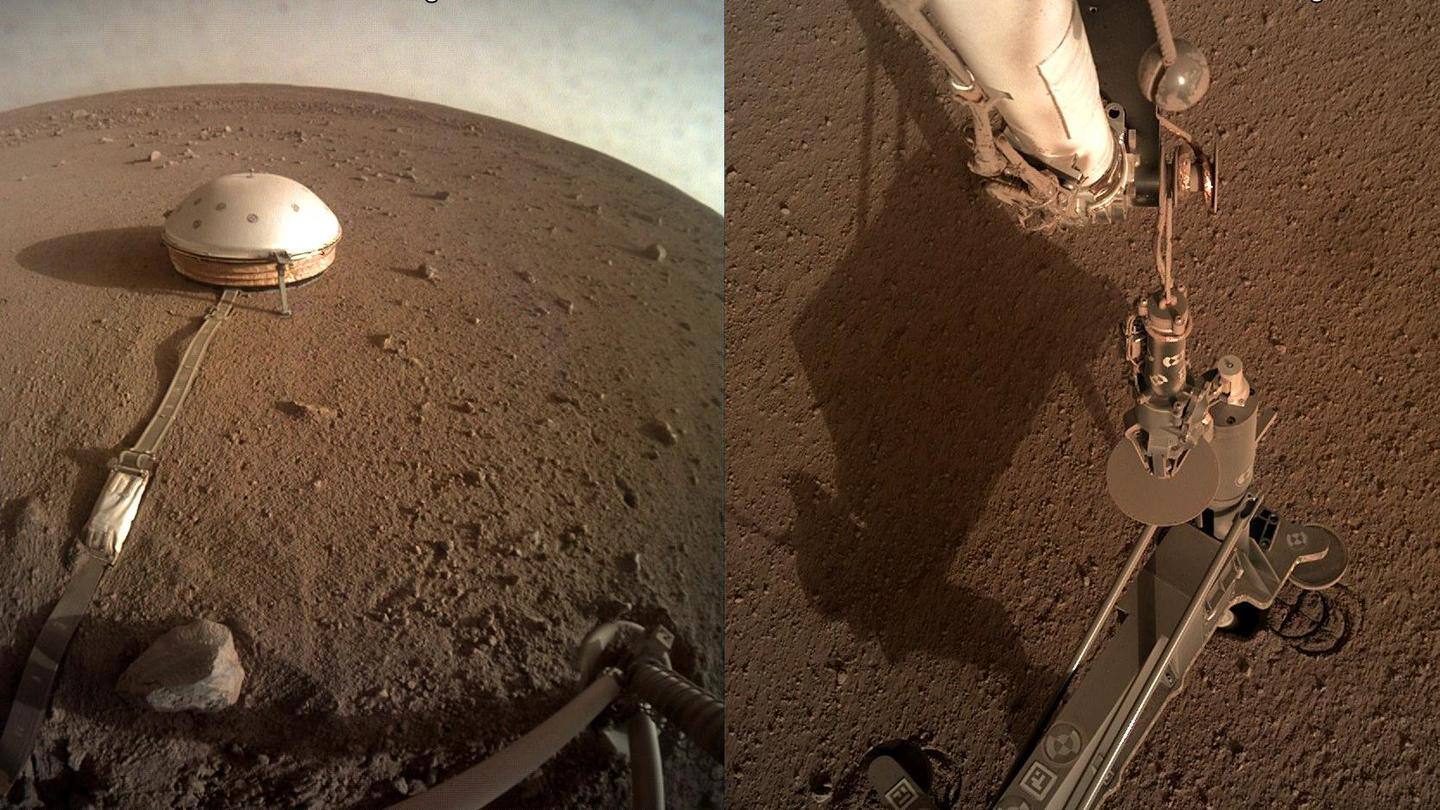
Here's why NASA is heaping Martian soil on InSight's seismometer
What's the story
Since a successful landing on Mars, NASA's InSight lander mission has seen its fair share of challenges. Most recently, InSight's seismometer dubbed Seismic Experiment for Interior Structure (SEIS) has been relaying back false positives and noisy readings of seismic activity on the red planet. The problem appears to be with SEIS's dome-shaped shell and its tether to the InSight lander.
Information
Martian seismic events caused by volcanic activity, not tectonic plates
InSight landed on Mars on November 26, 2018, with the objective of investigating the planet's interior structure and composition. So far, scientists have gathered that Mars doesn't have tectonic plates like Earth. Instead, tremors on Mars—marsquakes—are caused due to volcanic activity on the planet.
Lateral thinking
Seismometer is so sensitive that winds obscure minor seismic activity
A new post by NASA's Jet Propulsion Laboratory (JPL) has explained that Martian winds obscure SEIS's readings for smaller marsquakes. With no manned missions planned to the red planet, NASA must adapt and improvise. It is now using a scoop attachment on the end of InSight's robotic arm to pour Martian soil on the SEIS's dome so it trickles down to the tether.
Adapt and overcome
Expansion, contraction of tether causes popping sounds, spikes in data
The metallic tether connecting SEIS to the InSight lander makes "popping sounds" and causes "spikes in data" as it expands and contracts due to the 100°C day/night temperature variations on Mars. JPL engineers hope that burying the tether under Martian soil will insulate it from the temperature variations, slowing down the expansion and contraction, thereby eliminating the spikes in data.
Race against time
InSight will enter hibernation soon to brave the Martian winter
Although NASA has extended the InSight mission until December 2022, it's a race against time to get the tether buried. InSight's solar panels are covered with dust, its batteries are running low on power, and Mars is moving away from the sun. NASA will turn off InSight's instruments in a couple of months so it can hibernate until solar irradiation improves in July.
Cleaning solar arrays
Best seismic readings are observed during Martian northern summer
Moreover, InSight could send a dust-repelling wave of electric charge over its solar panels to clean them. However, it's crucial that NASA rapidly eliminates issues plaguing InSight's seismometer. Some of SEIS's best readings have been recorded during the Martian northern summer when the winds calmed down and SEIS was even able to detect smaller marsquakes. This window will open soon after InSight wakes from hibernation.
Research hotbed
Cerberus Fossae likely a center of seismic activity on Mars
SEIS picked up two quakes on March 7 and March 18 of magnitude 3.3 and 3.1, respectively. NASA claims these are the best readings among the 500+ marsquakes the seismometer recorded to date. These marsquakes originated from an area called Cerberus Fossae, likely a seismically active location, which could become the center of attention for researchers around the world collaborating on the InSight mission.